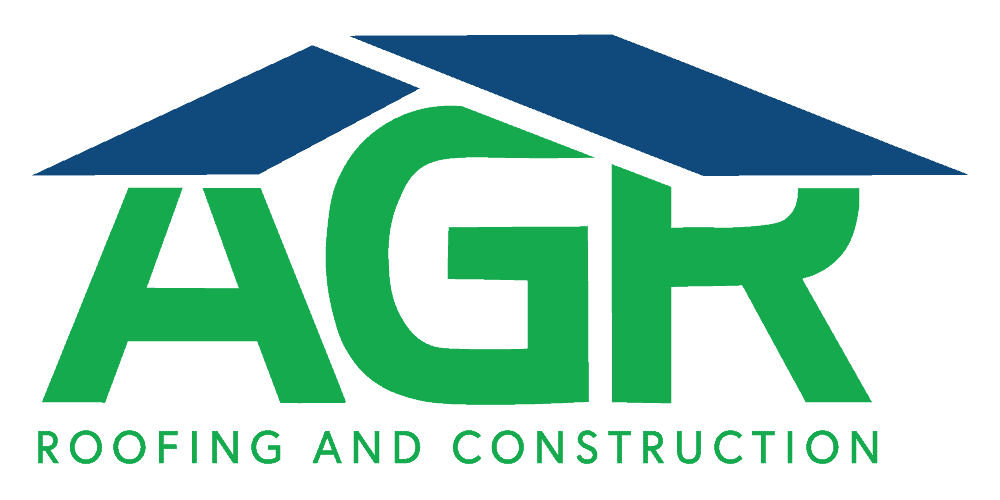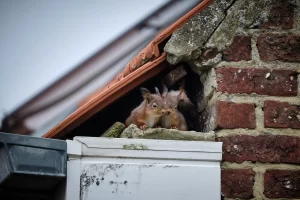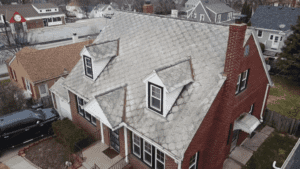The majority of residential roofs consist of multiple components, not just the shingles visible from the ground. This combination of materials contributes to the structural integrity, waterproofing, and overall protection of the rest of your home’s components that are located beneath the roof. Decking is arguably the most important component of your roof’s structure. The roof deck is not visible from the exterior of your home, but it is one of the most important components to maintain because it serves as the basis for the entire roofing system.
What Exactly is Roof Decking?
Decking, also known as roof sheathing, is the lowest layer of a roof’s structure. Typically, it is composed of wooden boards. When a house is being framed, this material is placed on top of the structure to create the actual roof.
The roof decking is what the other components of your roofing system, such as the underlayment and shingles, are attached to. This portion of the roof must be kept in the best condition possible for a variety of reasons.
Which Materials Are Usual for Roof Decking?
There are two types of residential roof decking that are prevalent. The first category is known as plank decking. Prior to the invention of plywood, most roofs were decked with planks because they were readily available and functional. Plank decking is typically constructed from long, rectangular wood boards. Most are either 1 x 6 or 1 x 8 in size. If your home is older, it’s possible to find plank decking underneath it. Typically, it appears as though wood flooring boards are laid adjacently.
Sheet decking is the more prevalent choice. This type of roofing decking is sometimes referred to as sheathing and is composed of flat sheets of wood. On roofs, you will typically find one of two types of sheet decking.
The primary material is referred to as OSB or oriented standard board. This is the most common material used for residential roofs. The sheet itself is composed of compressed strips and pieces of wood. Typically, they have a thickness of 7/16″ and are sold as flat sheets that are applied to the surface. This type of sheet decking is commonly utilized because it is more cost-effective.
The alternative is plywood. It is available in a variety of thicknesses ranging from 3/8″ to 34″ Your roofer will select the proper size based on the span of your home’s rafters. Plywood is commonly used in many homes and is readily available for most applications. It is typically more expensive than OSB, however.
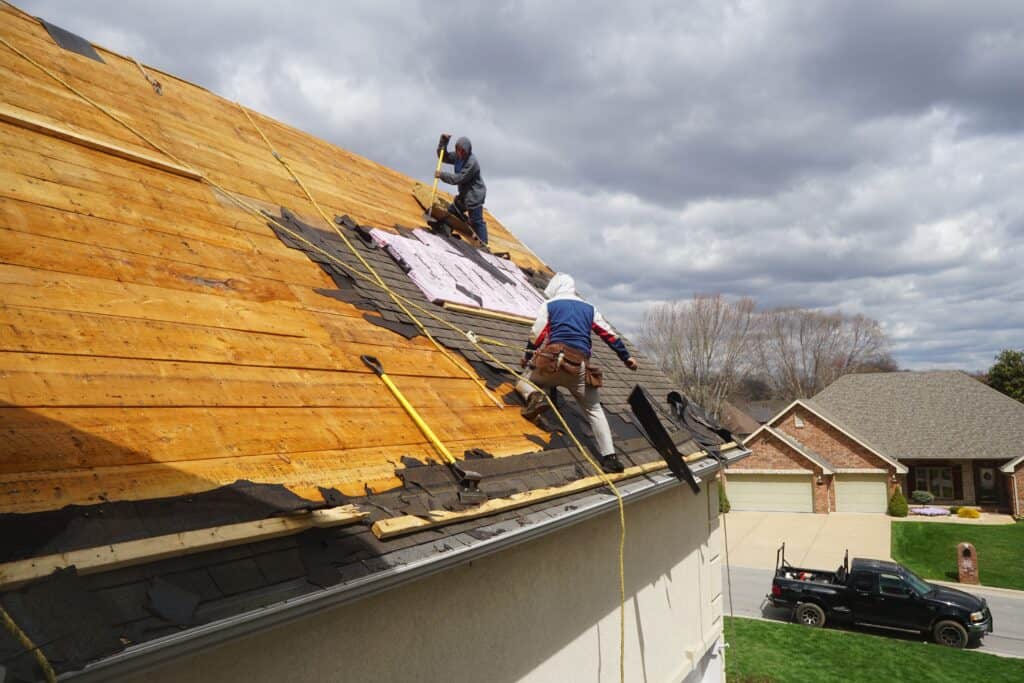
What Is the Function of Roof Decking?
Roof decking is the home’s protective structure. These roofing components contribute to the roof structure of the building. That indicates that it keeps moisture out. It aids in reducing energy loss. Additionally, it protects the rest of your home from the elements. It is essential to your entire roofing system.
Also, note that roof decking is necessary for constructing a sturdy, reliable structure upon which to install roofing materials. This may include asphalt shingles, metal roofing, or another material of your choosing. If this foundation is not in good condition, the entire roofing system may not be durable and dependable.
What Is the Durability of Roof Decking?
Some roofs may last longer than 20 years, but this is uncommon. However, roof decking can typically last much longer. Depending on their quality and maintenance, these wood components could last up to a century. Upkeep and maintenance are crucial. If and when the roof decking is exposed, the ability to make immediate repairs is crucial for preserving the roof’s lifespan.
When Should Roof Decking Be Replaced?
Given the significance of a well-maintained roof deck, the question is how to determine if it is protected. This can be difficult to detect, particularly if you are not a trained professional. Therefore, an annual roof inspection is typically one of the best things you can do to preserve this area. Your roofing contractor will be able to identify shingle damage that could expose the roof decking.
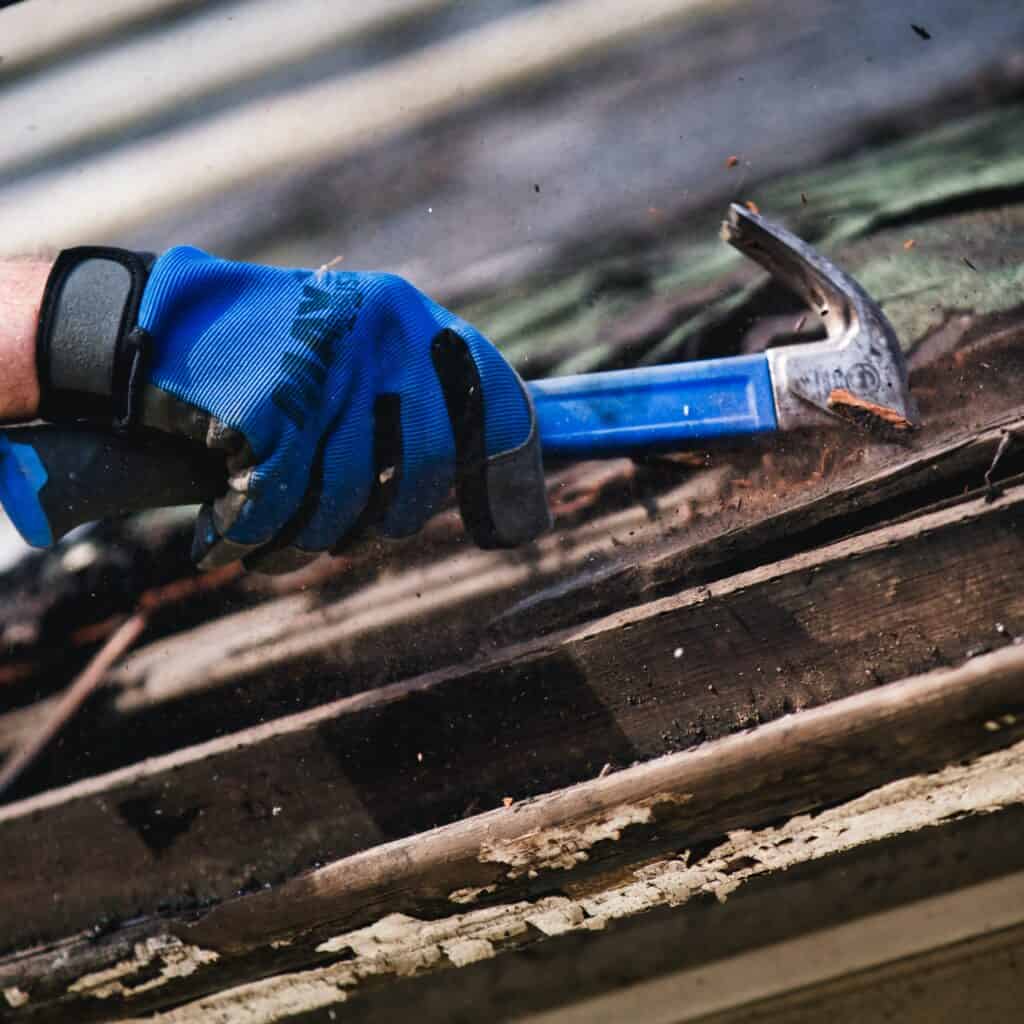
Signs your roof decking needs to be replaced
There are holes in the structure. If there are leaks in your attic or home, there is a good chance that the roof decking is damaged. The decking is typically protected by a paper or plastic covering that prevents water from entering. Leaks indicate that it is not functioning properly.
Interior ceiling stains. It is possible to miss an active leak. However, there may be ceiling surfaces with stains that indicate a leak occurred. If you observe discoloration on the ceilings of the upper floors of your home, this could be an indication of deteriorated decking.
Mold and mildew in the attic. Mold or mildew may also be present in the attic, especially in the upper portion of the space. If you observe this or if there is water damage to the insulation in the attic, the roof structure is leaking.
Sagging roofing. If you observe any type of sagging in the roof’s structure (either externally or internally in the attic), this could be an indication of roof decking damage. The wood may absorb an excessive amount of water, causing the entire structure to sag. This requires immediate repairs.
There are holes in the roof. Any damage to the roof itself compromises the decking’s structural integrity. This could be the result of hail, a falling tree, or missing shingles.
It is essential to recognize the signs of damage to roof decking. The sooner you get assistance for this, the sooner you can protect your home from risk, including costly ceiling damage.

